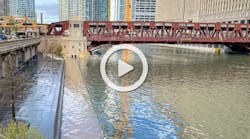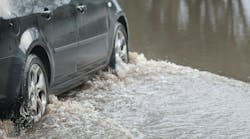USACE breaks ground on Everglades water seepage barrier wall
The U.S. Army Corps of Engineers (USACE) and the South Florida Water Management District joined other government officials and stakeholders to break ground on the Central Everglades Planning Project (CEPP) New Water Seepage Barrier Wall Project, which extends the successful underground wall that was built as part of the 8.5 Square Mile Area Seepage Wall Project.
The project supports ongoing restoration efforts to move water south through the Everglades and into Florida Bay while mitigating potential flooding impacts in communities outside of Everglades National Park.
“We are excited to be partners with the South Florida Water Management District on the first substantial project for CEPP New Water,” says Lt. Col. Todd Polk, the Deputy Commander for South Florida for the USACE Jacksonville District. “This will make it possible for us to deliver additional water south across Tamiami Trail.”
The CEPP New Water Seepage Barrier Wall Project adds five miles of underground seepage wall along the L-357 Levee. SFWMD completed the 2.3-mile first phase of the wall earlier this year and the project is already demonstrating success. During heavy rain events, water that typically would flood communities remained inside Everglades National Park to support the park’s historic hydrology.
By supporting restoration flows of water through the Greater Everglades Ecosystem, the new underground wall supports the Combined Operating Plan (COP) and new infrastructure being put in place throughout the Everglades that delivers more water into Everglades National Park and Florida Bay—two key areas that need increased flows of water.
“Moving more water south through the Everglades to Florida Bay supports overall Everglades restoration goals,” says Adam Blalock, DEP Deputy Secretary for Ecosystem Restoration. “Thanks to the leadership of Governor DeSantis and the steadfast work of our partners, we are able to continue our forward momentum with critical projects like this, that will not only mitigate flooding in a portion of the Las Palmas community, but it will also prevent water from leaking (seeping) out of Everglades National Park.”
Since Governor DeSantis signed Executive Order 19-12 in January 2019, the South Florida Water Management District received record state investments to advance Everglades restoration and infrastructure projects while improving water quality and management. Florida continues progress on several key priority ecosystem restoration projects including the Everglades Agricultural Area (EAA) Reservoir Project.


